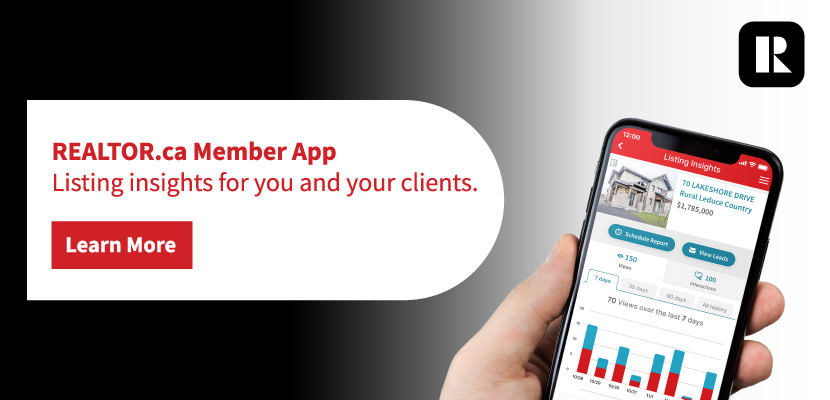If you’ve never worked with a vendor take-back (VTB) mortgage — much less heard of them — now might be a great time to acquaint yourself. And if it’s been a while, consider brushing up.
A finance option popular during the 1980s and 1990s for getting buyers into the market, a VTB mortgage involves a seller assuming either a portion or the full amount of a mortgage directly from their buyer. So, instead of (or in addition to) a buyer going through a traditional lender or bank and its prequalification process, the seller takes on that debt.
Who uses VTB mortgages?
As for who can use and benefit most from this type of mortgage, Catherine Melville, CEO & mortgage professional at Cultivate + Evolve Financial, weighs in: “I think largely (they) would be in the aging demographic, who may be mortgage-free. Secondly, it can be very attractive to investors when they’re looking at getting into properties or having multiple properties in different areas or buildings, and it’s also attractive on the commercial side.”
Melville has seen many VTBs in buyers’ markets when people are eager to sell, but there isn’t strong interest, or buyers aren’t qualifying for conventional mortgages. VTB mortgages are often offered by those in or entering retirement looking for an additional income source.
Jordan Glaser, a broker with Re/Max Realtron in Toronto, has found this as well. “There’s a big older demographic getting out of the market or selling off investment properties with equity, and don’t necessarily need the money to buy another property,” he explains.
Melville typically sees these mortgages on properties in rural locations or for properties that may need upkeep or renovations. “In climates where maybe a property’s less desirable or there’s a lot of inventory, it can sometimes be an attractive feature to get people into the market,” she notes.
On-the-ground realtor experience with VTBs
Glaser worked on a VTB mortgage at the end of 2022 for his client, who was buying an investment property. The broker found it to be a great negotiation piece.
“It just made the whole process a little bit easier. It gave a little more ability and a couple more points to negotiate on when we were doing the deal,” he recalls. “It’s not just straight price and closing date being the only factors that play into the deal, but also the length of the take-back, the amount of interest, etc., which can also be negotiated to give a little more flexibility.”
While Glaser hasn’t dealt with VTBs regularly, he feels that with where interest rates are these days, they’re starting to see them a bit more. “It’s just a good thing to know about and a good tool to have in your back pocket,” he comments. “I see with properties that are hard to get mortgages on — like run-down properties where the bank won’t mortgage them or won’t appraise them at the values they might be trading at — are opportunities to do something for a buyer to get in and for a seller to get a good deal in some cases.”
Kevin Crigger, broker with Johnston & Daniel, a division of Royal LePage, has done several transactions with VTB mortgages. One was largely a land transaction, but an inhabitable residential building on the property would’ve been incredibly challenging to mortgage through any traditional means. Several people looking at it intended to do some form of redevelopment or improvement to the building.
A few offers couldn’t secure traditional financing, and since Crigger’s clients were in a cash-positive position, not owing anything on a mortgage, they saw a VTB as a way to speed up the transaction and ultimately secure the highest possible price.
“It opened it up to a wider range of potential buyers, effectively with the financing already in place,” Crigger mentions. “This was prior to rates increasing. So there wasn’t a huge advantage from our client’s perspective in terms of the revenue received — the rate was premium to the market, but not too substantially.”
Now, Crigger points out the opposite is true: “We’re seeing opportunity with sellers in a cash position that have no leverage on their property. Some are selling and downsizing, some are selling and going to another property that they already own, and they don’t necessarily have plans for the capital.”
Crigger has also seen sellers use VTB mortgages to help time or defer large capital gain payments. He feels that as long as there’s enough comfort in the down payment size, where interest rates are currently, VTBs offer a significant opportunity for sellers to lend on an asset they’re very comfortable with and know well.
That said, Crigger always recommends clients seek professional financial and legal advice. “We always involve our professional advisors, whether that be an accountant to discuss what the tax implications can be or a lawyer to discuss what the structuring and appropriate documentation and clauses should be.”
The VTB mortgage process
The option of a VTB mortgage usually comes up in one of two scenarios. The first is either when it’s on the property listing or is being presented verbally by the listing agent.
The second is when a buyer is heavily invested in the property but they don’t qualify for a traditional mortgage or have enough capital to acquire the property. At that point, the seller’s agent would educate their client on a VTB mortgage and ensure they have capital invested in the appropriate portion of funds for the purchase.
Normally, the next step is getting a lawyer involved on both sides. The VTB financing can be outlined as an option in the purchase agreement, including the interest rate, term and details. This should include how and how often payments will be made, along with the fact that the agreement is between the buyer and the seller — without an independent lender.
For simplicity and consistency, the rate is often the same throughout the term, but not always. And it’s important to note that the property needs to have a clear title. Sometimes, the individual can clear a mortgage before completion and then register a VTB as well.
“Usually, I recommend that the individuals engage a broker best suited to prepare disclosures and engage a lawyer who can draft up the terms with the assistance of the broker – whether it’s the seller’s or the buyer’s broker, or combined if they’re working together,” Melville explains.
Once the terms are accepted, usually, if the buyer is also obtaining conventional financing (some people will get a VTB for the entirety of the loan or just a portion), they’d need to inform their mortgage holder of the VTB payment so that it’s considered in their qualification, as this could impact financing.
Then, funds from the seller would be held back from being transferred across the purchase to ensure the funds are registered. There would be a lien placed against the property behind the first mortgage charge, or the VTB would be listed in first position if the buyer wasn’t obtaining a traditional mortgage.
“From the seller’s perspective, it’s really important that they obtain independent legal advice because there are a lot of risks associated with going into that secondary charge behind the first-charge lender in terms of tying up their investments,” cautions Melville.
This is equally important for buyers. Melville strongly suggests that realtors “Advise (their clients) to thoroughly understand their rights as a borrower with this type of mortgage product.” This will help them fully understand the potential risks and benefits (including if and how they can back out of the agreement), along with any impact on their ability to get a conventional mortgage down the road.
Why should realtors care?
Crigger feels, “There’s inherent value in understanding all of the potential opportunities to put in front of your client, and especially in marketing a property, understanding what competitive advantages are available to them.”
And, despite VTBs being a small market segment, he feels that having and understanding every available tool — including VTB mortgages — should be the goal of every real estate professional. Crigger points out that VTBs present a great opportunity for price maximization, too. “From a realtor perspective, (knowing about them) shows a high level of informed understanding around the various abilities their clients have to traverse what can sometimes be challenging markets.”
Glaser wholeheartedly agrees: “It might not be something the seller’s offering, but if you bring it up as you’re trying to negotiate a deal, maybe there’s an additional opportunity to get a buyer a house that they otherwise wouldn’t be able to get, or to get the deal done in a way that works financially and on other terms, that otherwise wouldn’t get done.”
Melville feels it would be very valuable for realtors to get educated on and have a deeper understanding of VTB mortgages. “They could look into courses or connect with their broker partners to understand what the product is or lean on them for a marketing piece or an infographic to supply to their sellers,” she suggests. “Brokers could use their knowledge, experience, and understanding of VTBs … as a tool to help them in negotiations.”

Emma Caplan-Fisher is an editor and writer for REM. She has over a decade of experience in various content types and topics, including real estate, housing, business, tech, and home & design. Emma’s work has also been featured in Cottage Life, the Vancouver Real Estate Podcast, the Chicago Tribune, Narcity Media, Healthline, and others. She holds a Certificate in Editing from Simon Fraser University.















Just as Realtors haven’t seen VTB’s in decades, I think most mortgage brokers would be in the same boat. Education is key, but there is little in the way of resources when it comes to VTB’s.
I have used VTBs in the past & the only issue is that if there is a 1st mtg with a lender …the lender does not want a 2nd mtg elsewhere.
Next you’ll want to recount the Seller’s Taxation and Price advantages to offering a VTB Zero% mortgage — and the at-term-end advantages plus along-the-way advantage of lower monthly payment to a Buyer.
As someone who did VTBs in the 80s and 90s and has attempted to be as compliant as possible with REBBA over the years I see too many issues and realities post-Covid of offering VTBs that even suggesting it to be a viable assist in selling a home or for retirement income I do know think a Seller could make a due diligence decision to do so.
The Loss potential is so high in 2023 as anyone who is selling a substantial number of homes each month sees is extreme. Your covenant right of foreclosure is virtually worthless should the mortgagee simply rent out the home to someone else in an arms length agreement to maintain living the foreclosed home for likely in excess of a year or more without paying.
In the 90s of course we had to establish LTVs to compensate for falling prices and with the incessant talking points of the impossibility of prices falling in 2023 I don’t how you can educate a Owner with enough understanding to accept the risk they are at this time and probably would be increasing over the term of the mortgage.
I did not see LTV mentioned once in this article but it should have appeared in the first sentence or two and then repeated consistently throughout the article.
99% of today’s agents are simply not qualified to even attempt a VTB in 2023 and it is impossible to gain that knowledge by taking a course. If you are in this business for the long haul I would encourage you to not even attempt to discuss this idea with your Senior Sellers.
If they bring it up I would recommend suggesting they speak with a Mortgage Broker who was doing VTBs in the 90s and a good high volume local real estate lawyer before they even consider it.
Interesting article; it has merits and pitfalls. It would not be a good idea to hold a Mortgage on a single family home, unless the alternative was the property would not sell otherwise, and the risk factors are made available to the Mortgagee. The Lending Institutions will not advance a First Mortgage to a Buyer, if they have a Second Mortgage in the Agreement of Purchase and Sale; because the Buyer would not meet the “Stress Test” of the Lender. The Mortgage back by the Seller/Sellers is used with Commercial, Industrial, Land, etcetera. The Mortgage back is a very good tool in the proper light of the transaction, but only if understood by all parties to the trade. Since the early 70’s I have used the Mortgage back by the Seller, on a number of transactions. There is a “Caveat”, if the buyer does not qualify with a Traditional Lender, then be prepared to have the Buyer make a substantial down payment. Otherwise, with little or no Equity in the property, it makes it easy for the Buyer to walk away, and leave the Seller holding the Liability of Back Taxes, Mortgage Payments (not met), Hydro, Gas, and Legal Bills. We live in a spoiled society at the present; the Mortgage rates are more than 5 %. In the 70’s the first Mortgage Rates averaged between 10% and 12% and one year were as high as 21%. The rates cause problems for first time Buyers, but there are a lot of people buying who do not need a Mortgage. Seek out those Clients by properly qualifying them, and there will be less stress for you.
Practice the 5 P’s of good business; Proper Planning Prevents Poor Performance.
Dan and Keith, I couldn’t have said it better.
The sense of duty, honour and responsibility is not there like it was a generation or two ago, nor are the courts as concerned with the rights of citizens who have paid “their dues”.
If the banks, with their deep pockets won’t take their chances on a buyer, why should pensioners risk their life savings and the financial health of their offspring on a stranger.
And as an aside, the emotional, together with financial stress of carrying this month to month, year to year – an possibly having to foreclose and evict, could take years off one’s life.
As a home owner in Windsor Ontario inJuly 1 1999 I was fortunate and cursed at the same time that the Vendor gave me a VTB on home I purchased from them. Well it was for 100% of the purchase price and only happened becasue we had opertunity them and me. They could not sell it and I needed a home asap as I was there scouting out a home for my family and I and they were arriving at the end of July 1999.
It was a hardship paying the mortage and took 7 years to catch up equity on the property. We sold and Windsor home prices tanked in 2008, we got out just in time. I say it was both a curse and blessing becasue for us failure was not an option but it took all my wife and I had to meet our obligations. Most people would not have lived with that heavy load. As a Realtor now, I so no use for such a tool and if i am the listing agent my Seller is wealthy and the Buyer using 50% of the asking price or there is no deal. Same thing applies if my client is the Buyer.